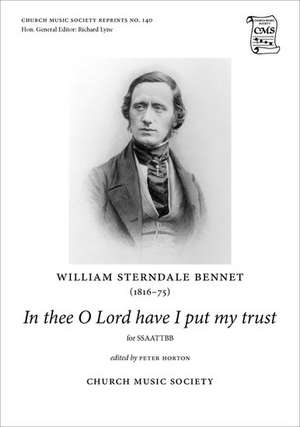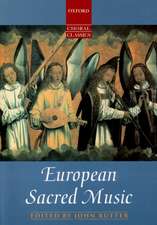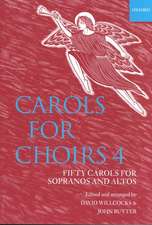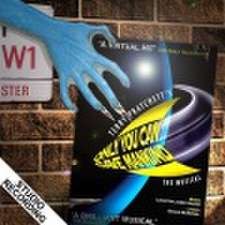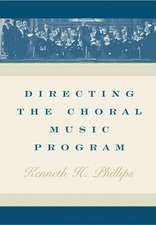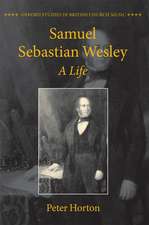In thee O Lord have I put my trust: Church Music Society
Compozitor William Sterndale Bennett Editat de Peter Hortonen Limba Engleză Sheet music – 17 noi 2016
Din seria Church Music Society
-
 Preț: 28.36 lei
Preț: 28.36 lei -
 Preț: 28.36 lei
Preț: 28.36 lei -
 Preț: 32.48 lei
Preț: 32.48 lei -
 Preț: 32.48 lei
Preț: 32.48 lei -
 Preț: 32.48 lei
Preț: 32.48 lei -
 Preț: 35.14 lei
Preț: 35.14 lei -
 Preț: 32.48 lei
Preț: 32.48 lei -
 Preț: 32.48 lei
Preț: 32.48 lei -
 Preț: 32.48 lei
Preț: 32.48 lei -
 Preț: 32.48 lei
Preț: 32.48 lei -
 Preț: 35.14 lei
Preț: 35.14 lei -
 Preț: 35.14 lei
Preț: 35.14 lei -
 Preț: 32.48 lei
Preț: 32.48 lei -
 Preț: 36.13 lei
Preț: 36.13 lei -
 Preț: 32.48 lei
Preț: 32.48 lei -
 Preț: 32.48 lei
Preț: 32.48 lei -
 Preț: 36.13 lei
Preț: 36.13 lei -
 Preț: 46.46 lei
Preț: 46.46 lei -
 Preț: 28.36 lei
Preț: 28.36 lei -
 Preț: 26.18 lei
Preț: 26.18 lei -
 Preț: 26.06 lei
Preț: 26.06 lei -
 Preț: 32.48 lei
Preț: 32.48 lei -
 Preț: 36.13 lei
Preț: 36.13 lei -
 Preț: 22.67 lei
Preț: 22.67 lei
Preț: 31.61 lei
Nou
Puncte Express: 47
Preț estimativ în valută:
6.05€ • 6.47$ • 5.04£
6.05€ • 6.47$ • 5.04£
Disponibil
Livrare economică 17-24 martie
Preluare comenzi: 021 569.72.76
Specificații
ISBN-13: 9780193954120
ISBN-10: 0193954125
Pagini: 16
Dimensiuni: 115 x 294 x 2 mm
Greutate: 0.05 kg
Ediția:Vocal score
Editura: OUP OXFORD
Colecția OUP Oxford
Seria Church Music Society
Locul publicării:OXFORD, United Kingdom
ISBN-10: 0193954125
Pagini: 16
Dimensiuni: 115 x 294 x 2 mm
Greutate: 0.05 kg
Ediția:Vocal score
Editura: OUP OXFORD
Colecția OUP Oxford
Seria Church Music Society
Locul publicării:OXFORD, United Kingdom
Recenzii
The work must count as one of the finest English anthems from the mid-19th century, with strong harmonic progressions and a well-balanced handling of counterpoint. Editor Peter Horton, one of the leading scholars of British music of this period, has produced an exemplary edition that is also beautifully set out on the page.
. . . this is a substantial and important anthem. Bennett was a major figure in the mid-19th-century, early Romantic movement in Britain. As a young man he was acclaimed by Mendelssohn and Schumann. His output includes five symphonies and four piano concertos, but remarkably little church music given that he had been a chorister at King's College, Cambridge. The present work was unpublished and apparently unperformed in the composer's lifetime. Its choral writing for two SATB choirs is skilful: the flowing counterpoint, antiphonal effects between the choirs, dramatic contrasts and variety of treatment of the text make this a satisfying anthem that deserves to be sung by any church choirs that can muster double-choir forces.
Bennett's musical style also bears resemblance to Mendelssohn in its finely wrought polyphonic lines, seemingly derived from German eighteenth-century models, and its unmistakable, yet essentially conservative, Romantic harmonic bent. The work is cast in two large movements, each with fugal conventions if not proper fugues. The only significant technical challenge for the voices is the eight-part texture. Otherwise, the music is of moderate difficulty.
. . . this is a substantial and important anthem. Bennett was a major figure in the mid-19th-century, early Romantic movement in Britain. As a young man he was acclaimed by Mendelssohn and Schumann. His output includes five symphonies and four piano concertos, but remarkably little church music given that he had been a chorister at King's College, Cambridge. The present work was unpublished and apparently unperformed in the composer's lifetime. Its choral writing for two SATB choirs is skilful: the flowing counterpoint, antiphonal effects between the choirs, dramatic contrasts and variety of treatment of the text make this a satisfying anthem that deserves to be sung by any church choirs that can muster double-choir forces.
Bennett's musical style also bears resemblance to Mendelssohn in its finely wrought polyphonic lines, seemingly derived from German eighteenth-century models, and its unmistakable, yet essentially conservative, Romantic harmonic bent. The work is cast in two large movements, each with fugal conventions if not proper fugues. The only significant technical challenge for the voices is the eight-part texture. Otherwise, the music is of moderate difficulty.
